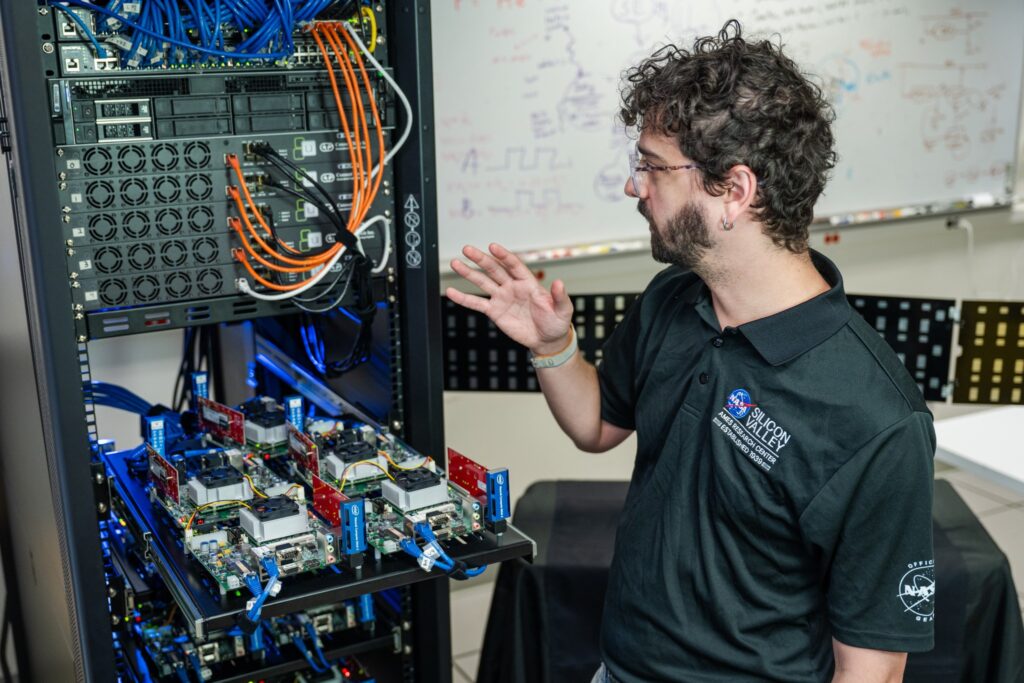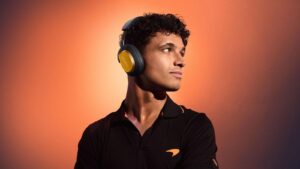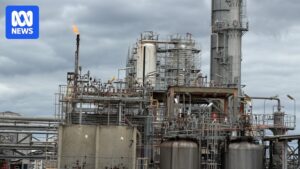
Software designed to give spacecraft greater autonomy could herald a future where swarms of satellites navigate and fulfill scientific objectives with minimal human intervention. This innovative approach is being spearheaded by NASA’s Distributed Spacecraft Autonomy (DSA) project, managed by Caleb Adams at NASA’s Ames Research Center in California’s Silicon Valley.
The DSA project aims to enhance the adaptability of multi-spacecraft missions, efficiently allocate tasks among spacecraft using ad-hoc networking, and enable human-swarm commanding of distributed space missions. This development is crucial as astronauts living and working on the Moon and Mars will depend on satellites for navigation, weather updates, and communications relays. Automating satellite communications allows explorers to concentrate on critical tasks rather than manually operating satellites.
Revolutionizing Space Missions with Autonomy
Long-duration space missions necessitate collaboration between systems on Earth and other planets. Satellites orbiting the Moon, Mars, or other distant areas face communication delays with ground operators, potentially limiting mission efficiency. The DSA project offers a solution by testing how shared autonomy across distributed spacecraft missions can make spacecraft swarms more self-sufficient in research and maintenance, adapting to changes with less human intervention.
By adding autonomy, satellites can provide services without waiting for commands from ground operators. Distributing this autonomy across multiple satellites, operating like a swarm, gives the spacecraft a “shared brain” to achieve goals they couldn’t accomplish individually. The DSA software, developed by NASA researchers, provides the swarm with a task list and integrates each spacecraft’s distinct perspective into the best plan of action for the entire swarm.
Sharing the Workload
The first in-space demonstration of DSA began onboard the Starling spacecraft swarm, a group of four small satellites demonstrating various swarm technologies. Since July 2023, the Starling mission has served as a testing and validation platform for autonomous swarm operations. The swarm first used DSA to optimize scientific observations, autonomously deciding what to observe without pre-programmed instructions.
“These autonomous observations led to measurements that could have been missed if an operator had to individually instruct each satellite.”
The Starling swarm measured the electron content of plasma between each spacecraft and GPS satellites to capture rapidly changing phenomena in Earth’s ionosphere. The DSA software allowed the swarm to independently decide what to study and how to distribute the workload across the four spacecraft.
Each Starling spacecraft operates as an independent member within the swarm. If one member is unable to complete its work, the others can react and fulfill the mission’s goals. The Starling 1.0 demonstration achieved several firsts, including the first fully distributed autonomous operation of multiple spacecraft and the first use of space-to-space communications to autonomously share status information between multiple spacecraft.
A Helping Hand in Orbit
Following DSA’s successful demonstration on Starling 1.0, the team explored additional opportunities to use the software to support satellite swarm health and efficiency. Continued testing on Starling’s extended mission included PLEXIL (Plan Execution Interchange Language), a NASA-developed programming language designed for reliable and flexible automation of complex spacecraft operations.
Onboard Starling, the PLEXIL application demonstrated autonomous maintenance, allowing the swarm to manage normal spacecraft operations, correct issues, or distribute software updates across individual spacecraft. Enhanced autonomy makes swarm operation in deep space feasible, reducing the need for constant communication with Earth.
Simulated Lunar Swarming
To understand the scalability of DSA, the team used ground-based flight computers to simulate a lunar swarm of virtual small spacecraft. These simulations provided position, navigation, and timing services on the Moon, akin to GPS services on Earth. The DSA team ran nearly one hundred tests over two years, demonstrating swarms of different sizes at high and low lunar orbits.
“The lessons learned from those early tests laid the groundwork for additional scalability studies.”
The second round of testing, set to begin in 2026, will demonstrate even larger swarms, using flight computers that could later go into orbit with DSA software onboard.
The Future of Spacecraft Swarms
Orbital and simulated tests of DSA are a launchpad for increased use of distributed autonomy across spacecraft swarms. Developing and proving these technologies increases efficiency, decreases costs, and enhances NASA’s capabilities, opening the door to autonomous spacecraft swarms supporting missions to the Moon, Mars, and beyond.
Milestones and Partnerships
- October 2018: DSA project development begins.
- April 2020: Lunar position, navigation, and timing (LPNT) simulation demonstration development begins.
- July 2023: DSA launches onboard the Starling spacecraft swarm.
- March 2024: DSA experiments onboard Starling reach the necessary criteria for success.
- July 2024: DSA software development begins for the Starling 1.5+ mission extension.
- September 2024: LPNT simulation demonstration concludes successfully.
- October 2024: DSA’s extended mission as part of Starling 1.5+ begins.
NASA Ames leads the Distributed Spacecraft Autonomy and Starling projects. NASA’s Game Changing Development program within the agency’s Space Technology Mission Directorate provided funding for the DSA experiment. NASA’s Small Spacecraft Technology program within the Space Technology Mission Directorate funds and manages the Starling mission and the DSA project.







